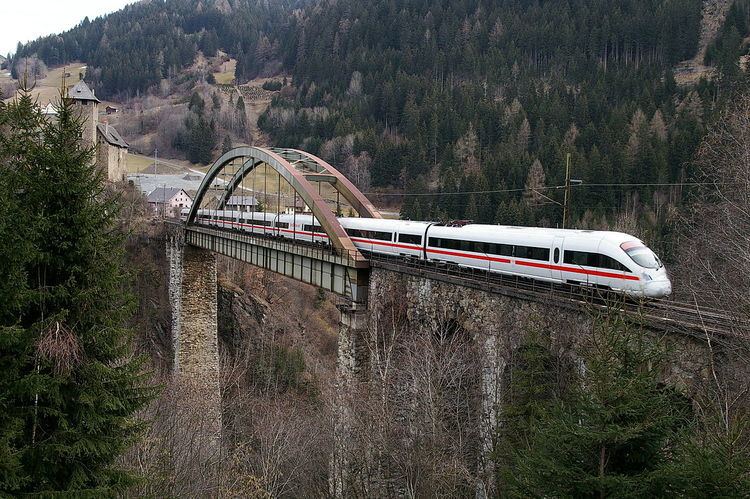Freight only ? | High-speed 93 km | |
 | ||
National railway Österreichische Bundesbahnen Total 6,123 kilometres (3,805 mi) Electrified 3,523 kilometres (2,189 mi) Main 1,435 mm (4 ft 8 ⁄2 in) | ||
Rail transport in Austria is mainly owned by the national rail company ÖBB. The railway network consists of 6,123 km, its gauge is 1,435 mm (4 ft 8 1⁄2 in) standard gauge and 3,523 km are electrified.
Contents
Austria is a member of the International Union of Railways (UIC). The UIC Country Code for Austria is 81.
History
The history of Austrian rail transport starts with the Reisszug, a private funicular serving the Fortress of Salzburg. Built at the end of the 15th century and first documented in 1515, it is the oldest known funicular in the world, and possibly the oldest existing railway line.
In the 19th century, after a building of several horse tramways, it opened in 1837 the Nordbahn line Vienna-Břeclav. The Imperial Royal Austrian State Railways, a company serving Austrian side of Austria-Hungary, was created in 1884 and in 1923, some years after the dissolution of the empire, it was founded the national company "ÖBB".
In 1998 the market was liberalised and had one of the highest degrees of market openness in the EU according to the 2011 Rail Liberalisation Index, although the market share of ÖBB remains above 90% for passenger rail.
Network
Austrian network, out of the principal rail system, also counts some funiculars, rack railways and lot of heritage railways mainly derived from part of disused lines. Some secondary lines have a narrow gauge.
Urban railways
Narrow gauge railways
In Austria, many narrow gauge railways were constructed due to the difficult mountainous terrain. Many survive as a common carrier or a heritage railway.
